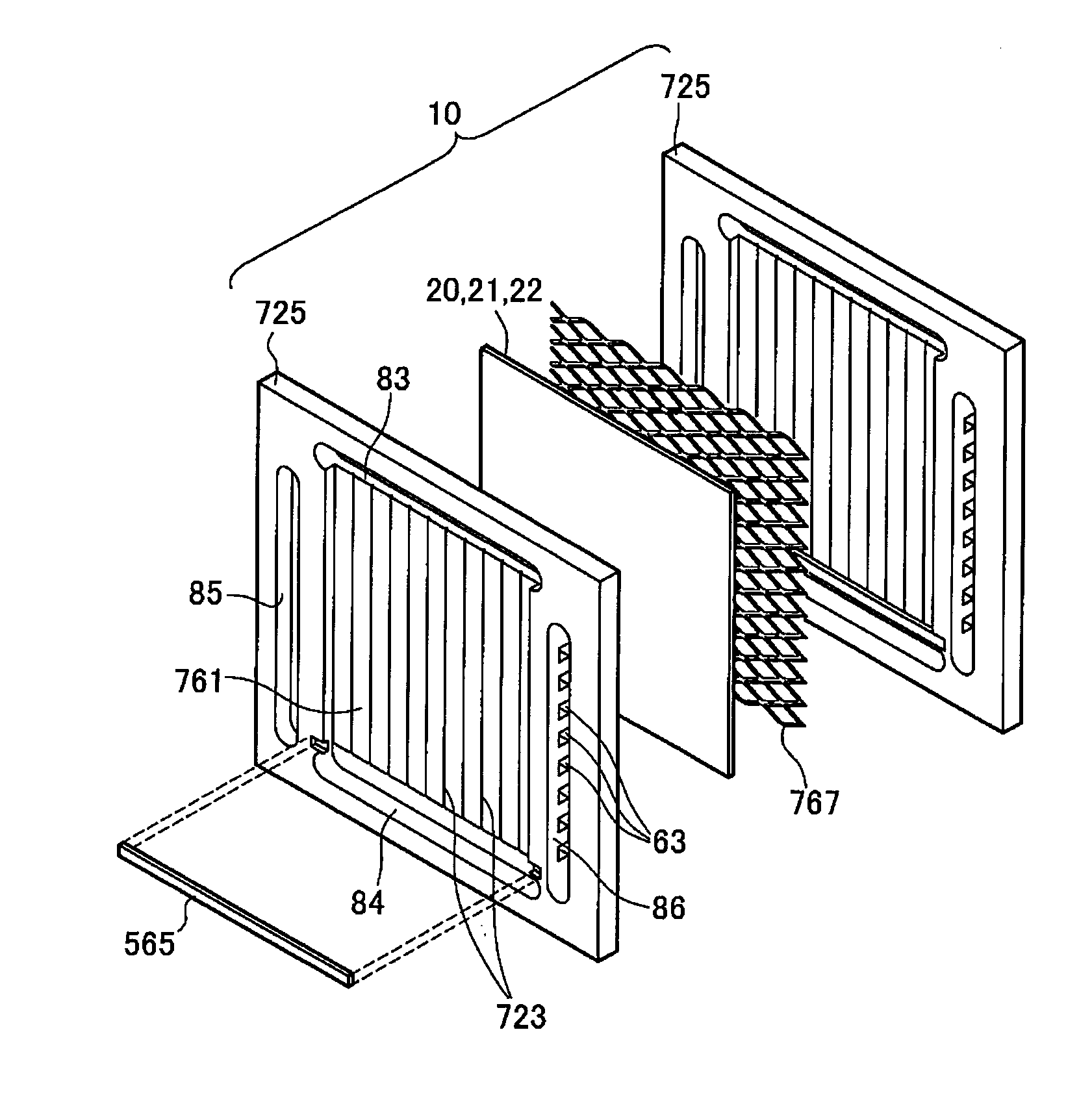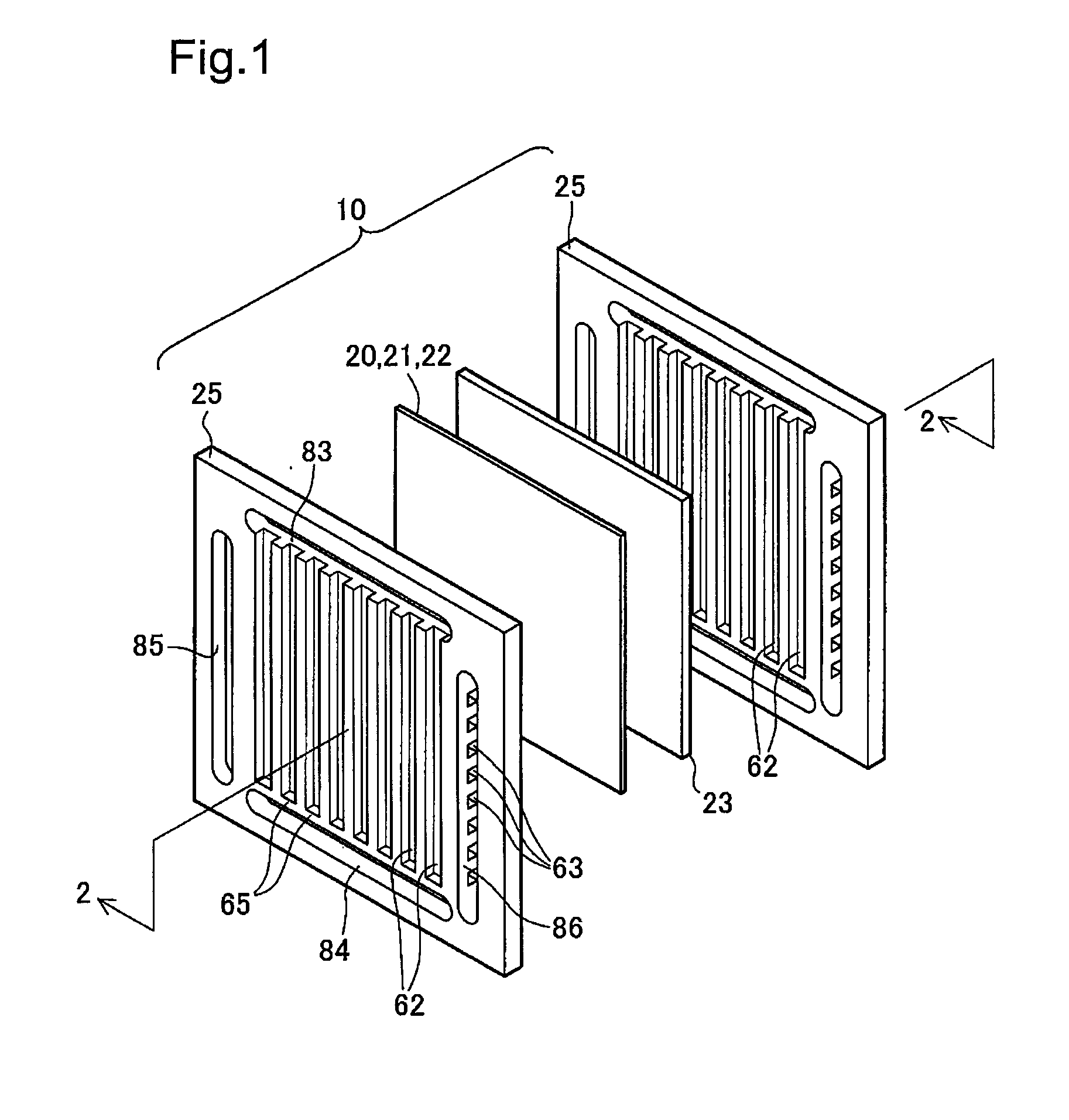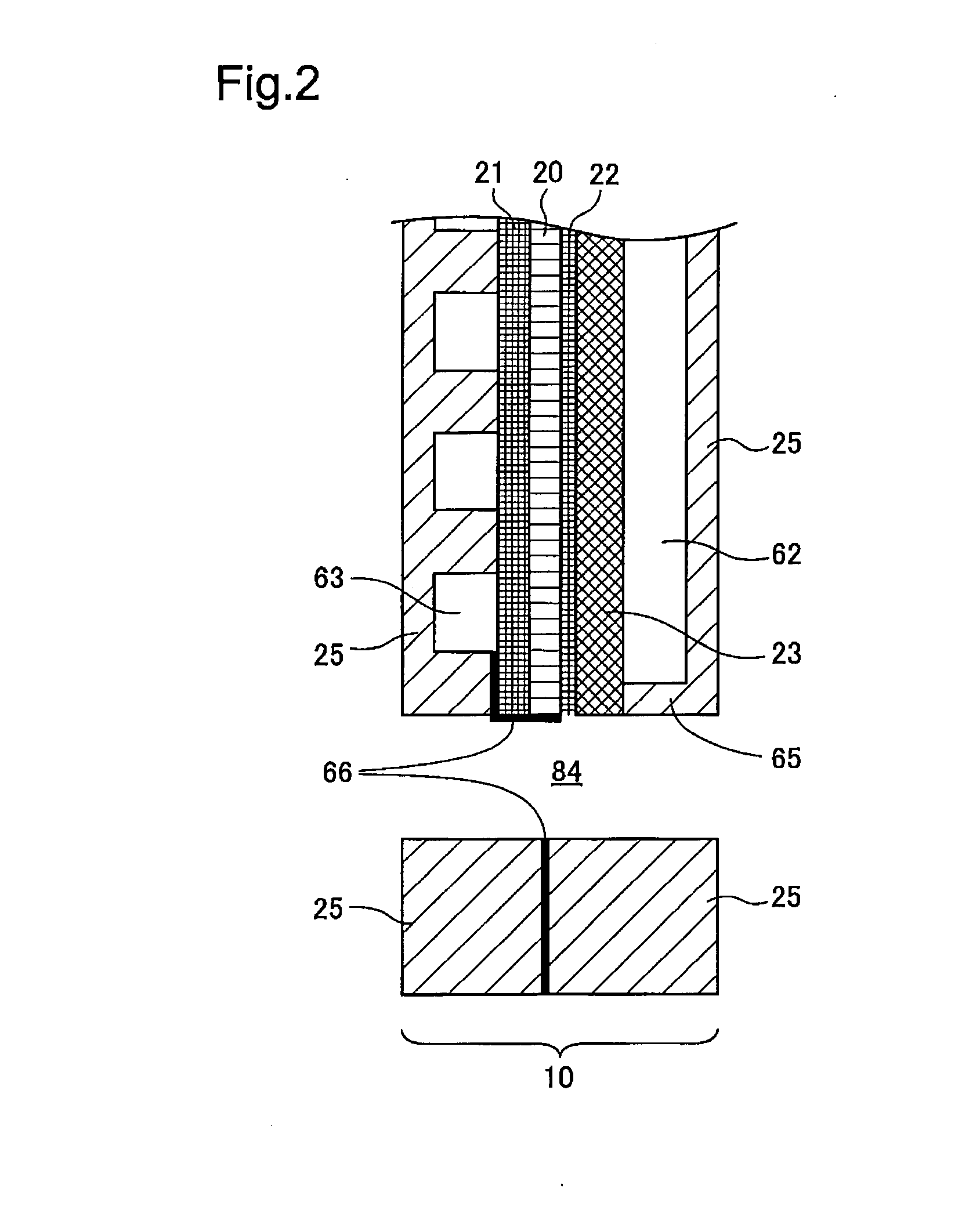Fuel cells
- Summary
- Abstract
- Description
- Claims
- Application Information
AI Technical Summary
Benefits of technology
Problems solved by technology
Method used
Image
Examples
second embodiment
C. Second Embodiment
[0087]In the unit cell structure of the first embodiment, the flow path-forming porous layer 23 has a flat plane, while the surface of the gas separator 25 is designed to have the grooves 62 for formation of the inner-unit cell oxidizing gas flow path. This unit cell structure is, however, not restrictive but may be modified. FIG. 6 is a decomposed perspective view illustrating the structure of a fuel cell in a second embodiment having the reverse concave-convex relation between a gas separator and a flow path-forming porous layer. The fuel cell of the second embodiment has a gas separator 225 and a flow path-forming porous layer 223, in place of the gas separator 25 and the flow path-forming porous layer 23. The like elements in the fuel cell of the second embodiment shown in FIG. 6 to those in the fuel cell of the first embodiment shown in FIG. 1 are expressed by the like numerals and are not specifically described here.
[0088]The gas separator 225 has a substan...
third embodiment
D. Third Embodiment
[0091]In the fuel cell structures of the first embodiment and the second embodiment, the flow of the oxidizing gas wholly goes into the flow path-forming porous layer at the end of the inner-unit cell oxidizing gas flow path. This arrangement is, however, not essential, but another arrangement may be adopted instead. FIG. 8 is a sectional view showing the schematic structure of a fuel cell in a third embodiment. The illustrated area of FIG. 8 corresponds to the structure of the first embodiment shown in FIG. 3. The fuel cell of the third embodiment has a similar structure to that of the fuel cell of the first embodiment, except a gas separator 325 in place of the gas separator 25. The like elements in the fuel cell of the third embodiment shown in FIG. 8 to those in the fuel cell of the first embodiment shown in FIG. 1 are expressed by the like numerals and are not specifically described here.
[0092]The gas separator 325 included in the fuel cell of the third embod...
fourth embodiment
E. Fourth Embodiment
[0097]In the fuel cell structures of the first through the third embodiments, the flow path-forming porous layer 23 is located on the gas diffusion layer 22. This structure is, however, not essential, but a different structure may be adopted for the same purpose. In the different fuel cell structure, a first water guide element for continuously guiding the water produced on the electrode in the plane direction of the electrode may be located to be not in plane contact with the electrode but to be separate from the electrode. FIG. 10 is a decomposed perspective view schematically illustrating the structure of a fuel cell in a fourth embodiment. The fuel cell of the fourth embodiment has a gas separator 525 and a water guide porous layer 523, in place of the gas separator 25 and the flow path-forming porous layer 23. FIG. 11 shows the end of an inner unit-cell oxidizing gas flow path in the fuel cell of the fourth embodiment. The illustrated area of FIG. 11 corresp...
PUM
 Login to View More
Login to View More Abstract
Description
Claims
Application Information
 Login to View More
Login to View More - R&D
- Intellectual Property
- Life Sciences
- Materials
- Tech Scout
- Unparalleled Data Quality
- Higher Quality Content
- 60% Fewer Hallucinations
Browse by: Latest US Patents, China's latest patents, Technical Efficacy Thesaurus, Application Domain, Technology Topic, Popular Technical Reports.
© 2025 PatSnap. All rights reserved.Legal|Privacy policy|Modern Slavery Act Transparency Statement|Sitemap|About US| Contact US: help@patsnap.com



